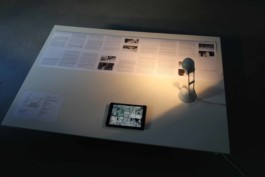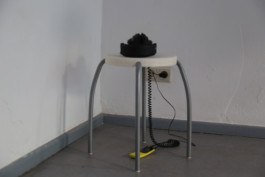HOW MUCH TIME DOES IT TAKE FOR FOSSILS TO CONVERT INTO FUELS?





2019-2020
Indus River Delta, Sindh, Pakistan
Installation + Book
It is a story of two mightiest Rig-Vedic Rivers Sindhu (Indus) and Sarasvati (Ghaggar-Hakra), the one which has disappeared and the other which is currently endangered.
On one hand, Sabah Saeed’s research is looking into the relation of the current threat to the Indus river from climate change. On the other hand, she investigates the role of technology to find out reasons for the disappearance of Sarasvati, its actual location and its link to the decline of Harappan Civilization. The technological advancements in the fields of Geology and Archaeology including remote sensing helped geologists to find out more accurate results, which is changing the information about the past. In the case of Pakistan and India, this changing information could lead to controversies because of their religious and socio-political interests. Historically, the political interest has been influencing scientific research, which creates space for interventions to analyze information from multiple perspectives. Sabah Saeed’s interest to intervene is to take the story of Sarasvati from past to future and to speculate further so that the end of the story in case of Indus could be different.
Video I: 1:24 Min.
Video II: Can Technology Change the Past? 1:53 Min.
Audio: 2.09 Mins
Print on Paper: Will Recalling Memories Recover the Lost? Selected Accounts from Field Research, 120cm, 35cm
Exhibited and Presented at
A Vital Piece of Information – Fragments of a Greater Context – Pratyush Raman, Noor us Sabah Saeed
Uqbar Project Space Berlin curated by Thomas Heitmann
Scope Sessions #85 at Somos Gallery Berlin
Unmaking History at Research & Publication Center Lahore curated by Natasha Malik, Saher Sohail and Laila Rahman
Supported by Lahore Biennale Research Grant, ifa Artist’s Contact Program Grant & Lacuna Lab Berlin
Photo documentation by Hira Nabi at Uqbar Projectraum Berlin
HOW MUCH TIME DOES IT TAKE FOR FOSSILS TO CONVERT INTO FUELS?
2019-2020
Indus River Delta, Sindh, Pakistan
Installation + Book
It is a story of two mightiest Rig-Vedic Rivers Sindhu (Indus) and Sarasvati (Ghaggar-Hakra), the one which has disappeared and the other which is currently endangered.
On one hand, Sabah Saeed’s research is looking into the relation of the current threat to the Indus river from climate change. On the other hand, she investigates the role of technology to find out reasons for the disappearance of Sarasvati, its actual location and its link to the decline of Harappan Civilization. The technological advancements in the fields of Geology and Archaeology including remote sensing helped geologists to find out more accurate results, which is changing the information about the past. In the case of Pakistan and India, this changing information could lead to controversies because of their religious and socio-political interests. Historically, the political interest has been influencing scientific research, which creates space for interventions to analyze information from multiple perspectives. Sabah Saeed’s interest to intervene is to take the story of Sarasvati from past to future and to speculate further so that the end of the story in case of Indus could be different.





Video I: 1:24 Min.
Video II: Can Technology Change the Past? 1:53 Min.
Audio: 2.09 Mins
Print on Paper: Will Recalling Memories Recover the Lost? Selected Accounts from Field Research, 120cm, 35cm
Exhibited and Presented at
A Vital Piece of Information – Fragments of a Greater Context – Pratyush Raman, Noor us Sabah Saeed
Uqbar Project Space Berlin curated by Thomas Heitmann
Scope Sessions #85 at Somos Gallery Berlin
Unmaking History at Research & Publication Center Lahore curated by Natasha Malik, Saher Sohail and Laila Rahman
Supported by Lahore Biennale Research Grant, ifa Artist’s Contact Program Grant & Lacuna Lab Berlin
Photo documentation by Hira Nabi at Uqbar Projectraum Berlin